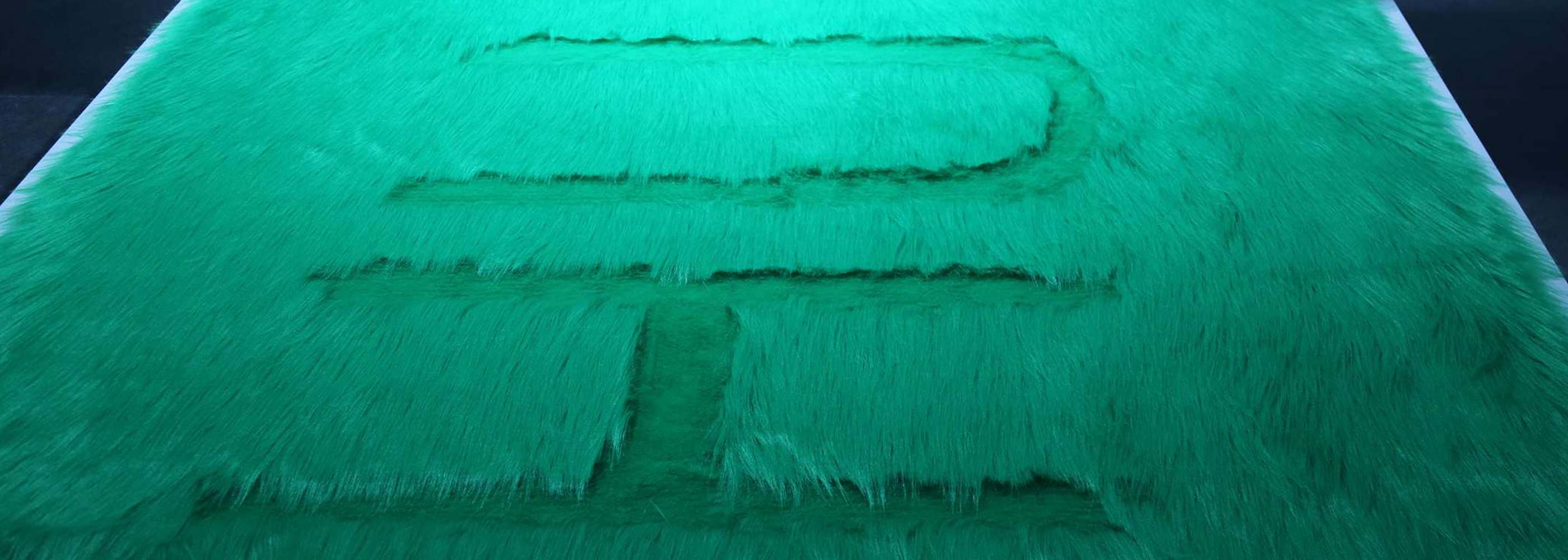

Li Xinmo: This work is a result of the performance art piece "Birth". An inverted triangle covered with green fur (simulated long-pile fur) is hung on the wall. During the performance, I shaved the word "humanity" into the furry green triangle with a razor.
An equilateral triangle with its vertex pointing upwards symbolizes male genitals and fire in many cultures. The Mayans use it to represent the sun and fertility. In the native art of Pueblo tribes in the Americas, it represents the sacred mountain. In contrast, an equilateral triangle with its vertex pointing downwards often symbolizes women in traditional cultures, representing the pubic region of women in ancient India, ancient Greece, and ancient Rome, and also representing the element of water.
The combination of the inverted triangle and animal fur symbolizes the integration of female life and natural power. Shaving fur with a razor carries symbolic meaning of violence and conquest. During the buzzing of the razor, "humanity" was born. This work profoundly explores the themes of humanity and nature, violence and life through unique artistic forms.
For the artist, the upside-down triangle symbolizes the triangular structure of the female reproductive system. Judy Chicago once created a feminist masterpiece, The Dinner Party, featuring a huge triangular table with the female vagina depicted from flat to three-dimensional on each dinner plate.
Zhong Ting: This artwork prompts viewers to reflect on the female body, identity, and gender with a strong visual impact. In Postmodern Wetlands: Culture, History, Ecology, Rodney Giblett uses the Mekong River Delta as a metaphor for female genitalia and pubic hair, associating it with the flow, purification, cultivation, and regulation of the ecosystem's metabolism in the wetlands.
The artist's carving of the word "humanity" on the triangle of fur seems to symbolize the disempowerment of women in terms of gender. Should women be recognized as human beings before being categorized by their gender? The work re-establishes the female body as the source of life, challenging the stigma associated with womanhood while suggesting the complexity of humans and their ecosystems.